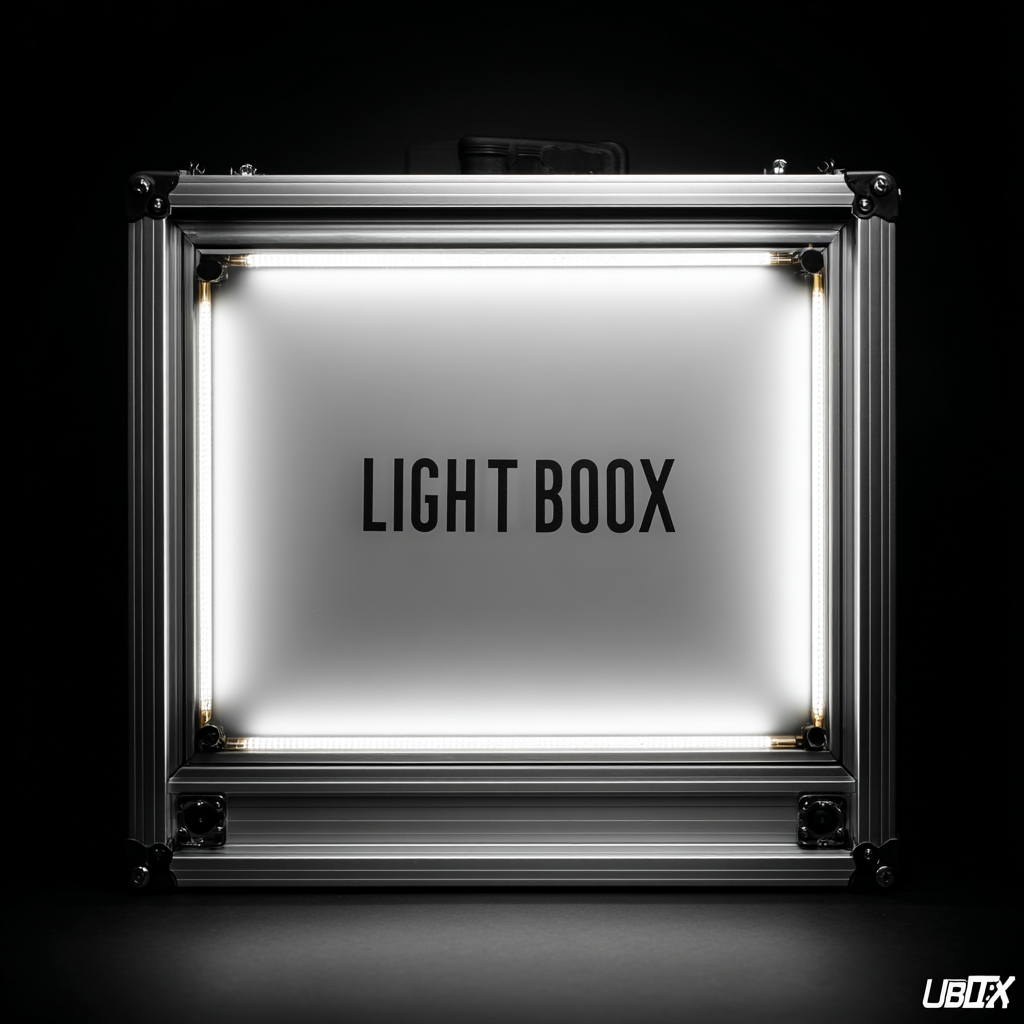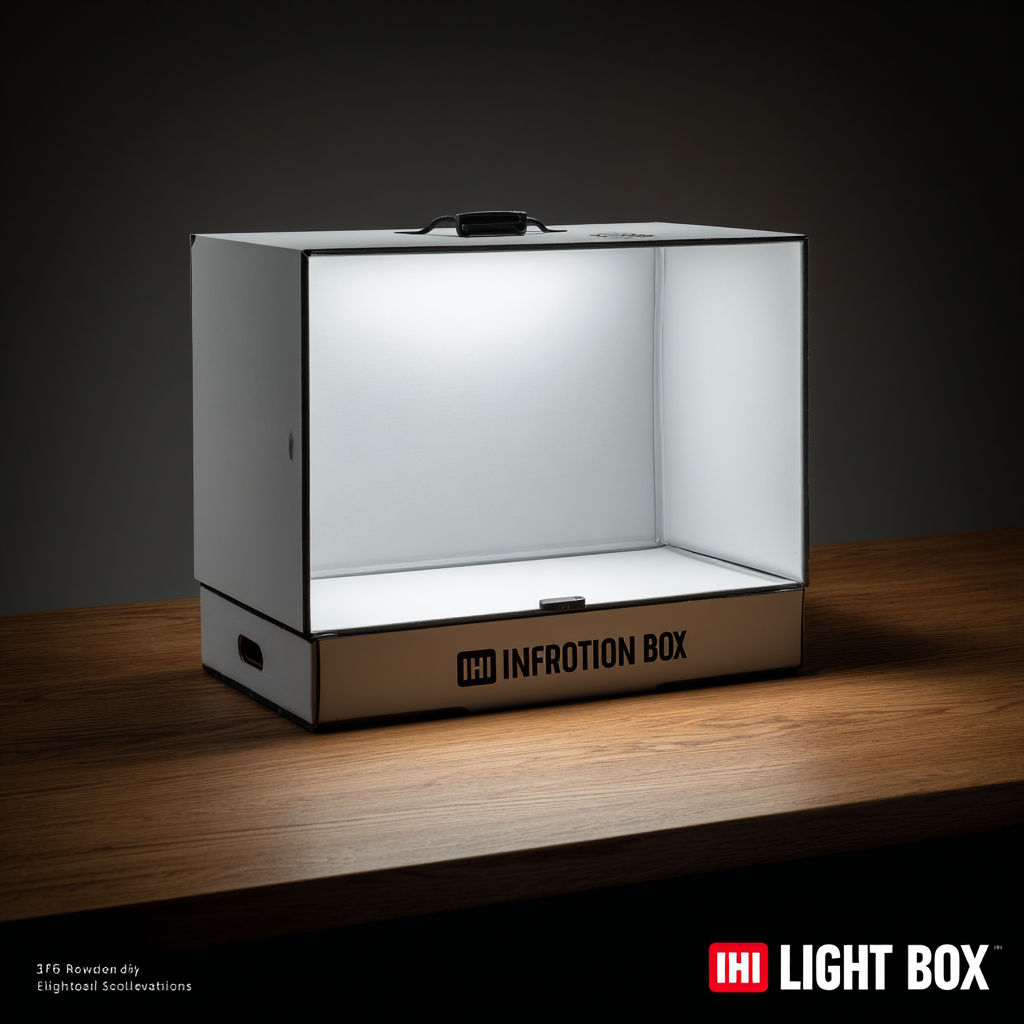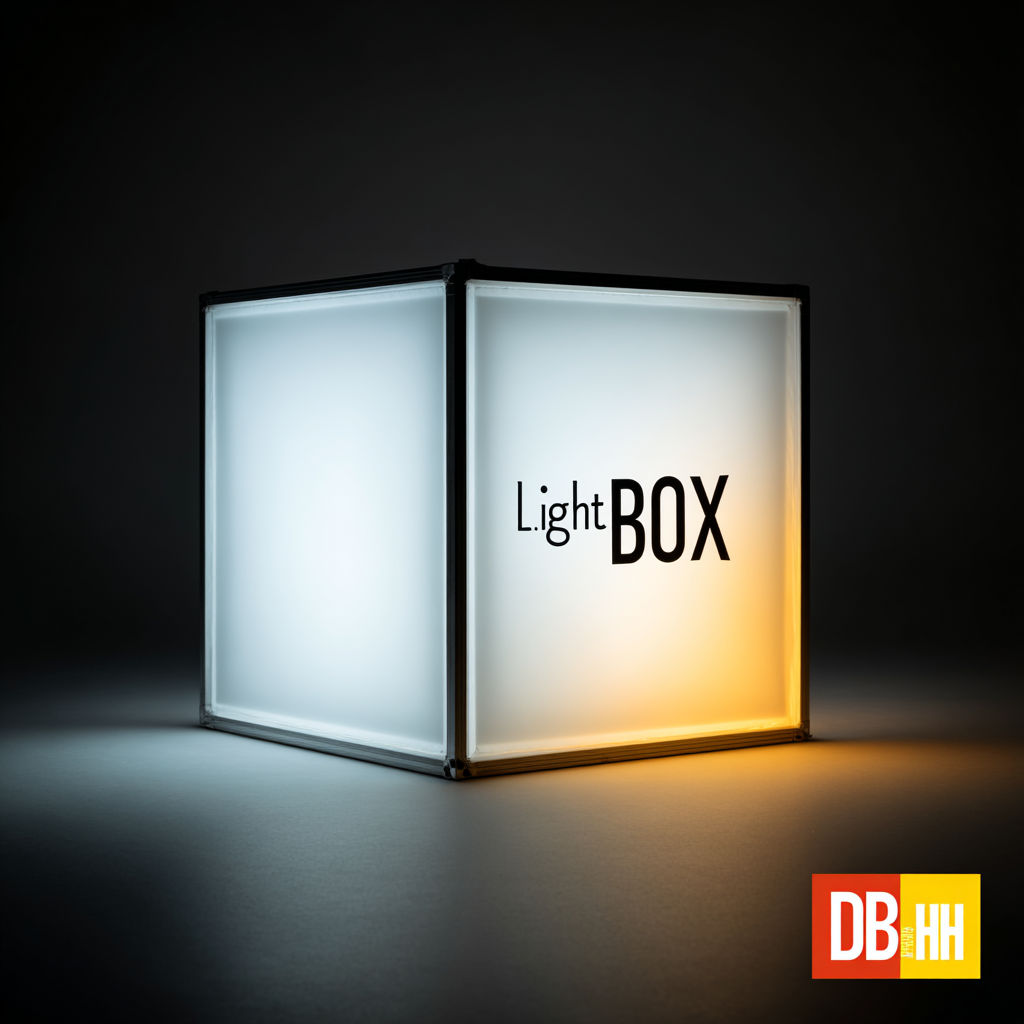



In the rapidly evolving world of visual presentation, the demand for striking imagery has led to innovative solutions that heighten the impact of visual storytelling. One of the most essential tools in this realm is the Light Box, a versatile device that significantly enhances the quality of displayed visuals. As we navigate through 2025, industry trends reveal a remarkable shift towards utilizing Light Boxes not only for photography but also for advertising, exhibitions, and personal projects. These advancements in technology and design have made Light Boxes more accessible and effective, allowing creators to produce stunning visuals that captivate and engage audiences. In this blog, we will explore the latest innovations in Light Box solutions and how they can transform your visual storytelling into a vibrant, eye-catching experience that resonates with viewers.

Light boxes have revolutionized product photography by providing a controlled environment that enhances image quality and detail. According to a report by the Professional Photographers of America (PPA), 70% of consumers are more likely to purchase a product after viewing high-quality images online. This is where light boxes shine, offering consistent lighting that minimizes harsh shadows and highlights, allowing products to be showcased at their best. They are particularly versatile, accommodating various products from jewelry to larger items, making them an essential tool for e-commerce businesses.
When using a light box, consider these tips to maximize your results. First, adjusting the angle of your light source can help eliminate unwanted reflections, particularly on glossy surfaces. Additionally, using a neutral backdrop will ensure that your product stands out without distractions. Lastly, maintain a clutter-free environment by clearing away unnecessary elements, allowing your audience to focus solely on the product.
Professionals recommend investing in a light box with adjustable brightness settings, as this enables photographers to adapt to different materials and colors. In fact, a study from the Imaging Science Foundation suggests that products photographed in a light box with adjustable features receive 50% more engagement on social media platforms. With these innovative solutions and techniques, you can elevate your product photography and captivate your audience.
In today's visually driven world, light boxes have emerged as essential tools for achieving stunning visuals across various industries. Common applications include photography, advertising, art displays, and retail merchandising. According to recent industry reports, the global light box market is projected to reach over $4 billion by 2026, demonstrating a robust demand for these innovative solutions. The ability to create captivating visuals with consistent brightness and color accuracy makes light boxes invaluable for professionals seeking to enhance their presentations.

Tips for utilizing light boxes effectively include ensuring proper positioning and ambient lighting to maximize impact. For example, use a light box with a dimmer switch to adjust brightness levels for different settings, allowing for flexibility in showcasing art or products. Additionally, consider incorporating high-quality materials that enhance diffusion and color representation—this is especially important in industries where detail and presentation are paramount.
Furthermore, advancements in technology, such as those seen in the latest graphic processing units, have enabled unprecedented visual realism and efficiency. By integrating these advancements with traditional light box applications, creators can achieve even more impressive visual results. Enhanced digital graphics paired with the natural light enhancement from light boxes can transform ordinary displays into extraordinary experiences, captivating audiences across various platforms.
Setting up your light box correctly is essential for capturing stunning visuals that showcase your products in the best light. Begin by selecting a suitable space for your light box. Ideally, you should choose a location with minimal ambient light to prevent unwanted shadows and reflections. Once you have your designated area, place the light box on a stable surface, ensuring it is free from clutter that could distract from your subject.
Next, arrange your lighting sources. Most light boxes come with integrated lights, but additional external lights can enhance the overall effect. Position your lights at different angles to create a soft, even illumination. Experimenting with the distance and angle of the lights will help you achieve the desired mood and clarity for your shots. Remember, the goal is to highlight the features of your subject without harsh shadows or overexposed spots.
Finally, choose the right backdrop for your setup. White or neutral backgrounds work well to emphasize the product, while colored backdrops can add personality and depth. Ensure that the backdrop is smooth and free from wrinkles to maintain a professional appearance. With these adjustments, you’re well on your way to capturing impeccable images that stand out.
| Dimension | Details |
|---|---|
| Light Box Size | 24"x24"x24" |
| Material | Durable PVC |
| Light Source | LED Strip Lights |
| Color Temperature | 5500K to 6000K |
| Weight | 5 lbs |
| Setup Time | 5 minutes |
| Ideal Use | Product Photography |
| Noise Level | Silent Operation |
Incorporating light boxes into creative marketing strategies can significantly elevate brand visibility and engagement.
These versatile tools provide a unique and eye-catching way to present products or services, making them particularly effective in high-competition environments.
With their illuminated backgrounds and sleek designs, light boxes draw attention while enhancing the aesthetics of promotional displays.
Brands can utilize these features to highlight their unique selling propositions, ensuring their messages resonate with customers.
Moreover, light boxes offer a dynamic platform for storytelling in marketing campaigns.
By integrating visually appealing graphics and animations, brands can create captivating narratives that leave a lasting impression on their audience.
Businesses can experiment with different colors, designs, and content within the light boxes to tailor their messaging for specific demographics or seasonal promotions.
This flexibility not only helps maintain a fresh and engaging marketing approach but also fosters a deeper emotional connection with potential customers, ultimately driving conversions and building brand loyalty.
 In today’s competitive market, storytelling is not just a trend; it’s a necessity for brands looking to engage consumers. Light box imagery serves as a powerful tool in enhancing a brand's narrative, creating a captivating visual experience that draws customers in. With its ability to illuminate products in an inviting and dramatic way, a light box can transform ordinary visuals into extraordinary statements. This innovative approach to showcasing products can evoke emotions, spark interest, and convey a brand’s unique story.
In today’s competitive market, storytelling is not just a trend; it’s a necessity for brands looking to engage consumers. Light box imagery serves as a powerful tool in enhancing a brand's narrative, creating a captivating visual experience that draws customers in. With its ability to illuminate products in an inviting and dramatic way, a light box can transform ordinary visuals into extraordinary statements. This innovative approach to showcasing products can evoke emotions, spark interest, and convey a brand’s unique story.
Utilizing light boxes allows brands to craft immersive experiences that resonate with their audience. By strategically placing products within the light box, businesses can highlight textures, colors, and intricate details that might otherwise go unnoticed. This method not only enhances the aesthetic appeal of the product but also reinforces the brand's message. Whether you are promoting apparel, accessories, or home decor, incorporating light box imagery into your marketing strategy helps to create memorable visuals that engage customers on a deeper level, ultimately driving brand loyalty and enhancing the consumer experience.
